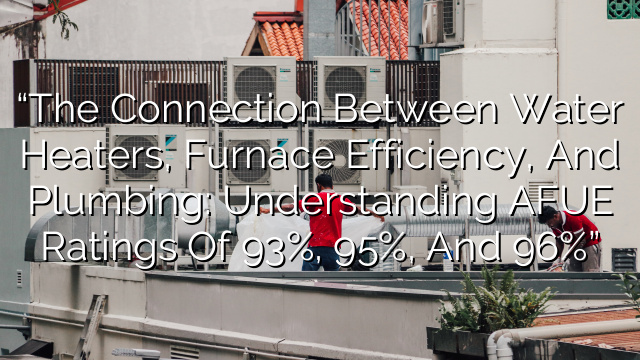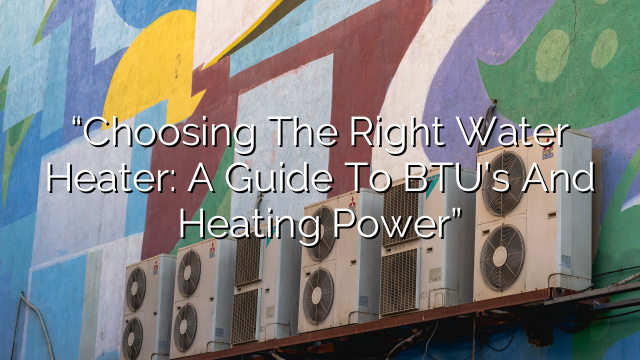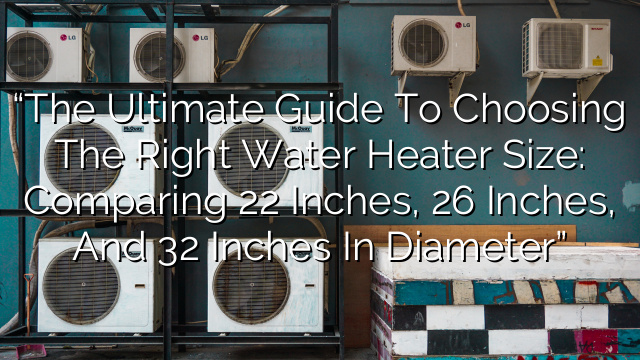When it comes to home comfort, water heaters and furnace efficiency play a significant role. These two vital components of your home’s plumbing and HVAC systems are interconnected, and understanding the relationship between them can help you make informed decisions to improve your home’s efficiency and save money in the long run.
Water Heaters and Plumbing
Your water heater is responsible for heating the water that flows through your plumbing system, providing you with hot water for showers, dishwashing, laundry, and other daily activities. It’s crucial to choose an efficient water heater to minimize energy waste and reduce your utility bills.
When selecting a water heater, consider the following:
- Fuel Type: Water heaters can run on different fuel sources, including electric, natural gas, propane, or solar power. Each fuel type may have its advantages and disadvantages, so it’s important to research and choose the one that fits your needs and budget.
- Tank vs. Tankless: Traditional tank water heaters store a certain amount of hot water in a tank, while tankless water heaters provide hot water on demand. Tankless water heaters are more energy-efficient because they don’t waste energy by constantly keeping water heated in a storage tank.
- Capacity: The size of your water heater should match your household’s hot water demands. Consider the number of bathrooms, family size, and lifestyle habits when determining the water heater’s capacity.
Ensuring your water heater is professionally installed and regularly maintained by a qualified plumber is essential for its optimal performance and longevity.
Furnace Efficiency and AFUE Ratings
Your furnace is responsible for heating your home during cold weather. Furnace efficiency is measured by the Annual Fuel Utilization Efficiency (AFUE) rating, which indicates how efficiently it converts fuel into heat. The higher the AFUE rating, the more efficient the furnace is.
The most common AFUE ratings for gas furnaces are 93%, 95%, and 96%. Let’s break down what each of these ratings means:
- 93% AFUE: A 93% AFUE rating means that 93% of the fuel your furnace consumes is converted into heat, while the remaining 7% is lost through combustion gases. While a 93% AFUE is a good efficiency level, it leaves room for improvement.
- 95% and 96% AFUE: Furnaces with 95% and 96% AFUE ratings are considered high-efficiency models. They achieve this by utilizing advanced technologies such as condensing heat exchangers, which capture and use additional heat from the combustion process. These furnaces are more expensive upfront but can significantly reduce your energy costs in the long run.
Upgrading to a high-efficiency furnace not only reduces your energy consumption but also improves your home’s comfort by providing consistent heating throughout the house. However, it’s important to note that a high-efficiency furnace must be properly sized and installed to ensure optimal performance and efficiency.
The Interconnection: Water Heaters, Furnace Efficiency, and Plumbing
The interconnection between water heaters, furnace efficiency, and plumbing lies in the fact that both systems consume energy to provide hot water and warm air, respectively. By choosing energy-efficient options for your water heater and furnace, you can minimize energy waste and reduce your overall energy consumption.
For example, using a tankless water heater instead of a traditional tank water heater can help you avoid the energy loss associated with constantly heating and reheating a large volume of water. This, in turn, reduces the workload on your furnace, as it doesn’t need to heat as much cold water supplied by the water heater.
Similarly, upgrading to a high-efficiency furnace with a 95% or 96% AFUE rating reduces gas consumption, resulting in less combustion gases being produced. This reduces the strain on your water heater, which doesn’t have to deal with as many combustion gases passing through it. Consequently, your water heater can operate more efficiently and have a longer lifespan.
Optimizing both your water heater and furnace efficiency can lead to significant energy savings and lower utility bills. Additionally, these upgrades contribute to reducing your environmental impact by lowering your carbon footprint.
FAQs
- What is AFUE?
AFUE stands for Annual Fuel Utilization Efficiency and is a rating that measures how efficiently a furnace converts fuel into heat. Higher AFUE ratings indicate greater efficiency.
- Why should I choose a high-efficiency furnace?
High-efficiency furnaces consume less fuel and produce fewer greenhouse gas emissions compared to standard-efficiency models. They can significantly reduce your energy bills while providing consistent heating.
- Can I install a high-efficiency furnace myself?
No, it is not recommended to install a high-efficiency furnace yourself. These systems require professional installation to ensure proper sizing, venting, and functionality. Improper installation can lead to safety hazards and decreased performance and efficiency.
- Should I replace my water heater and furnace at the same time?
While it’s not required to replace both systems simultaneously, doing so can provide advantages in terms of compatibility and overall energy efficiency. It’s best to consult with a plumbing and HVAC professional to assess your specific needs and make an informed decision.
- How often should I have my water heater and furnace serviced?
Regular maintenance for both your water heater and furnace is crucial to ensure optimal performance and longevity. It’s recommended to have them professionally serviced at least once a year to identify and address any potential issues.




